Written by Lorrie Reynolds
Categories
Agility Dog Rear End Awareness Benefits
Rear end awareness in agility dogs is such a critical skill. It affects many facets of agility performance, including navigating the contact obstacles safely, learning a contact behavior at the bottom, preparing for jump takeoff, foot placement in the weave poles, and accomplishing tight turns. Most dogs use their front feet and their back feet just follow. It takes some effort to teach dogs to be aware of their rear feet and help them learn how to move them separately. Here are 12 exercises and activities to do with your dogs that will help them understand where their back feet are and how to use them appropriately – and they come with the added benefit of building muscle strength.
Hint: Working through these exercises in order will make it easier for the dog to learn each one as you build to more difficult tasks.
Exercise 1 – Teach Your Dog to Put Their Rear Feet on a Fit Disc
(or Substitute)
The most basic exercise we can teach our dogs for rear end awareness is to put their back feet on a fit disc or something similar like a small foam balance block or throw pillow. Make sure whatever you use is non-slip so that it doesn’t slide out from underneath the dog’s feet. I recommend using something an inch or two thick. Any taller and it will present a bigger obstacle to a dog just starting out, and a lower object will not provide the tactile differentiation from the floor that will allow the dog to tell he is in position. Rear feet on the disc helps with proprioception and builds muscles in the hind end as the dog adjusts to minor shifts of the unstable disc.
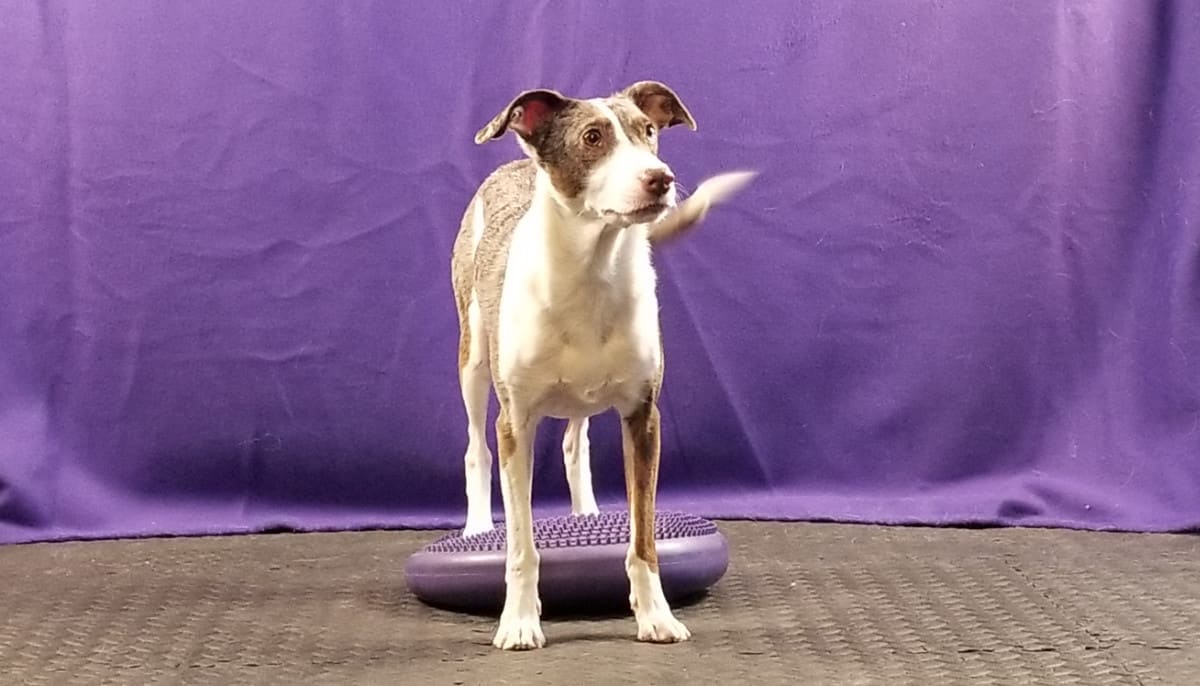
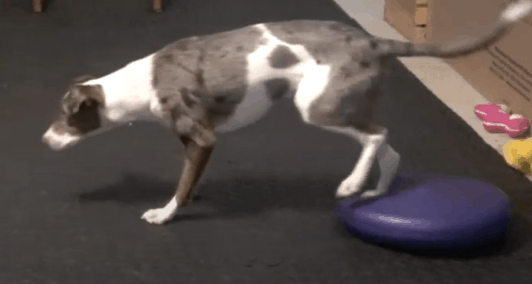
Exercise 2 – Teach Your Dog to Back Up
Another essential skill for rear end awareness in agility dogs is backing up. Backing up helps dogs focus on the motion and placement of their rear feet and works muscles in the rear limbs and lower back that are not used in the same manner when walking forward. Having the dog back up onto a target (like the fit disc used in exercise 1) helps with proprioception and gives them an end point.
Exercise 3 – Teach Your Dog to Walk Through a Ladder
While exercises with cavalettis and jump bumps can help teach striding, having the dog walk and then trot through a ladder teaches them to be mindful of the placement of their rear feet and helps with rhythmic rear-end movement. It is also helpful for building muscle as the dog lifts each paw over the rungs, which should be set only a few inches high, depending on the size of the dog. You can use either a standard household ladder for the exercise, buy a commercial PVC ladder made for dog training, or make your own.
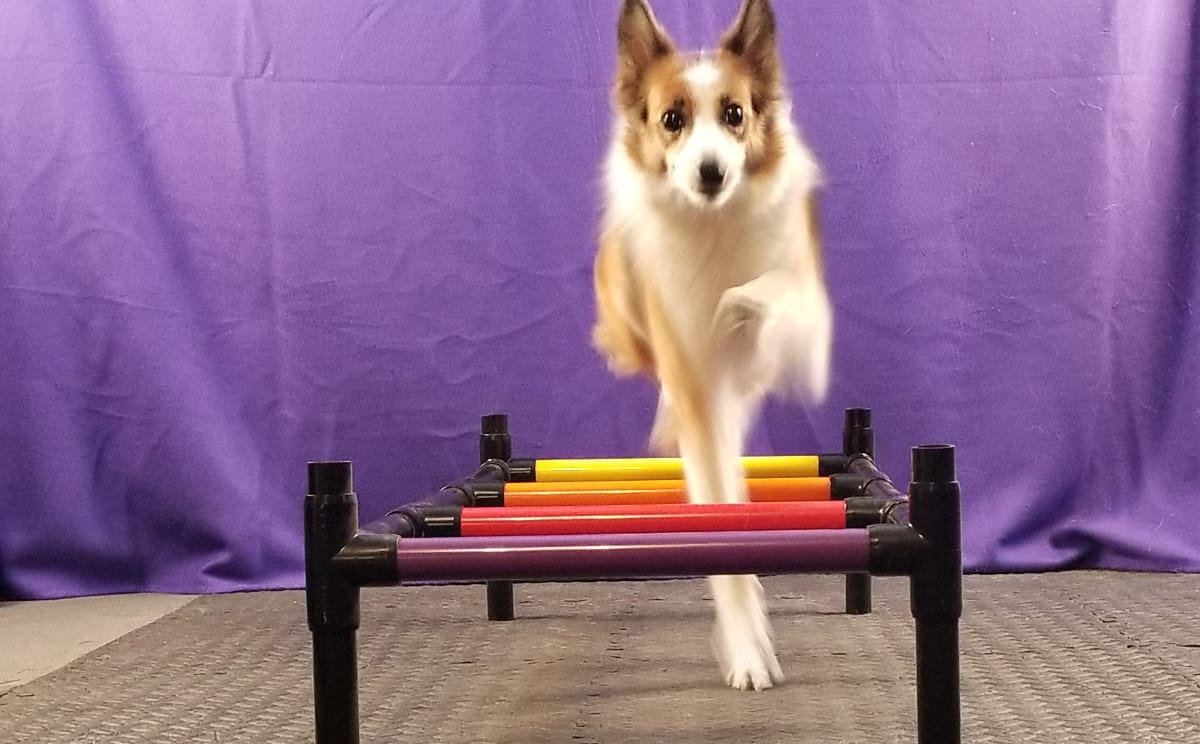
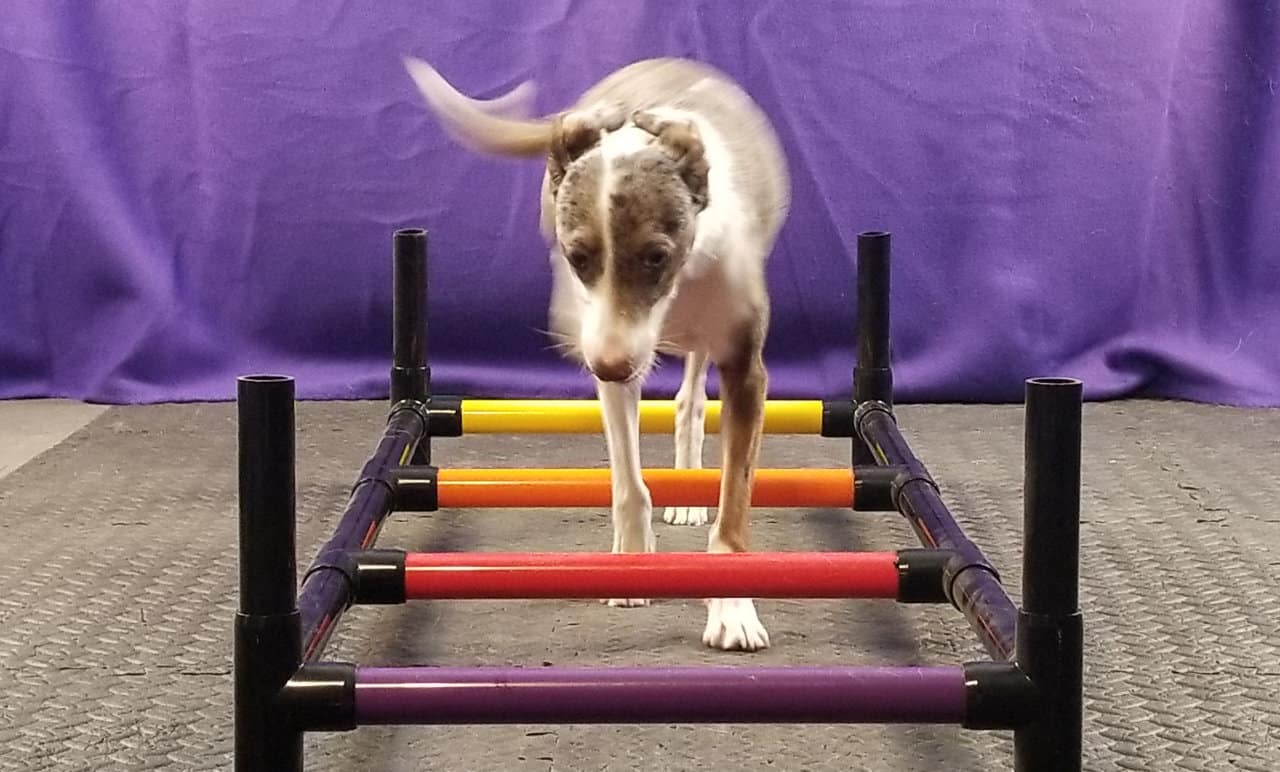
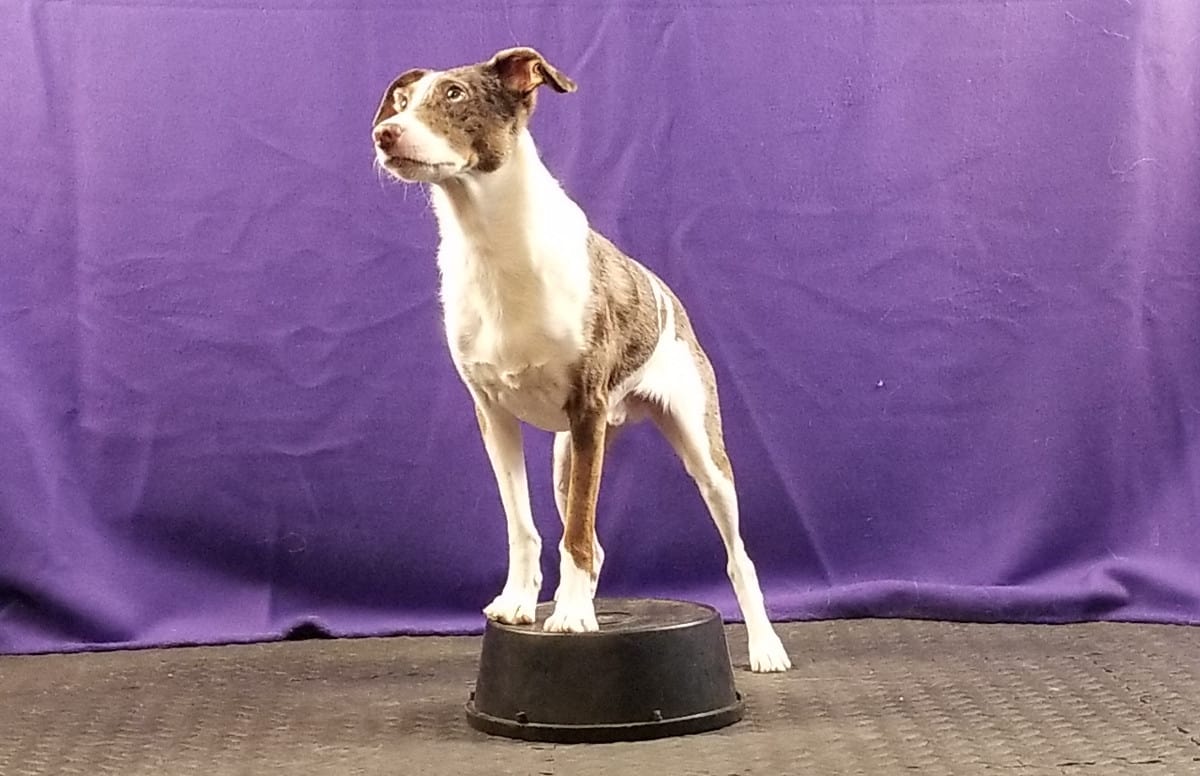
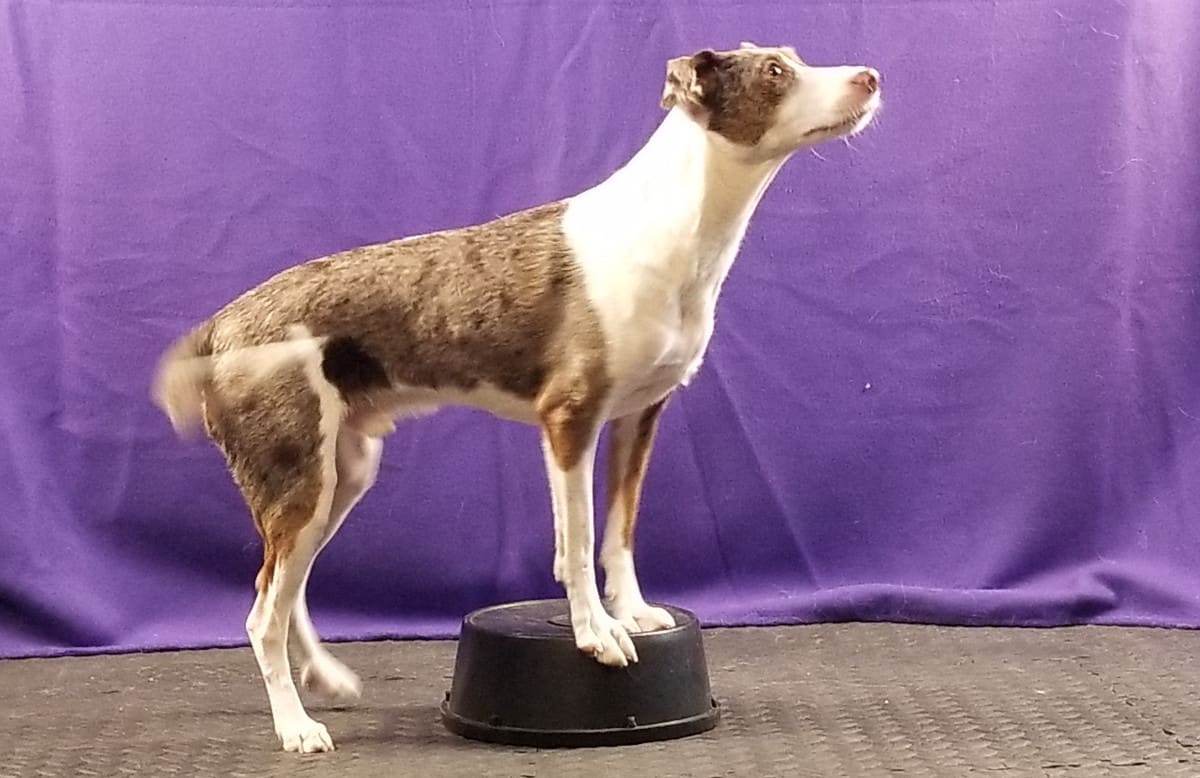
Exercise 4 – Teach Your Dog to “Perch” on a Mark Bucket
The “Perch” exercise, also sometimes called the “Sidestep Drill” helps teach the dog to step sideways with his back feet while keeping the front feet stationary. The first thing to teach is paws up on an object like a mark bucket (overturned rubber feed pan that can be purchased at a feed store) or low stool. Once the dog understands how to keep his paws on the bucket, lateral motion around the bucket with the rear feet is introduced. This exercise works muscles in the rear that are used for lateral motion and stabilizing muscles in the front shoulders and legs.
Exercise 5 – Teach Your Dog to Put Four Feet in a Box
Teaching a dog to put all four of his feet in a box helps with proprioception, or learning where all of his body parts are. It also builds muscles used for balance. As the boxes get smaller, the dog’s stance has to change to fit all four feet in, and he has to use his core and leg muscles to stay balanced as he stands in the box.
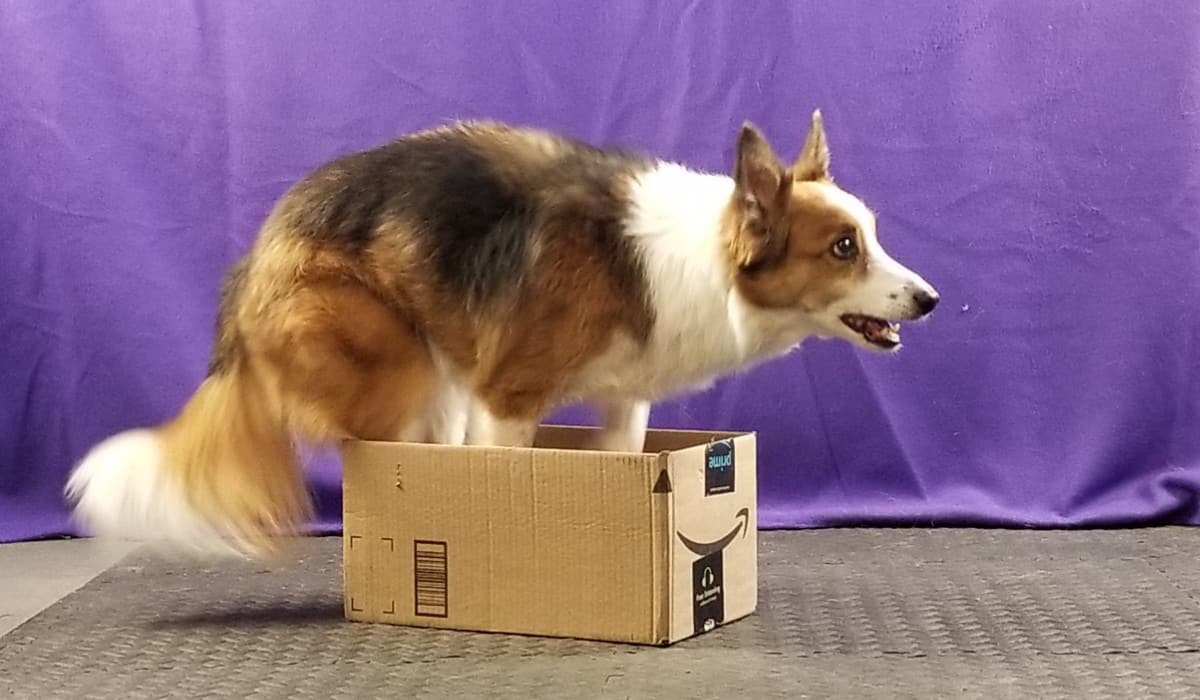
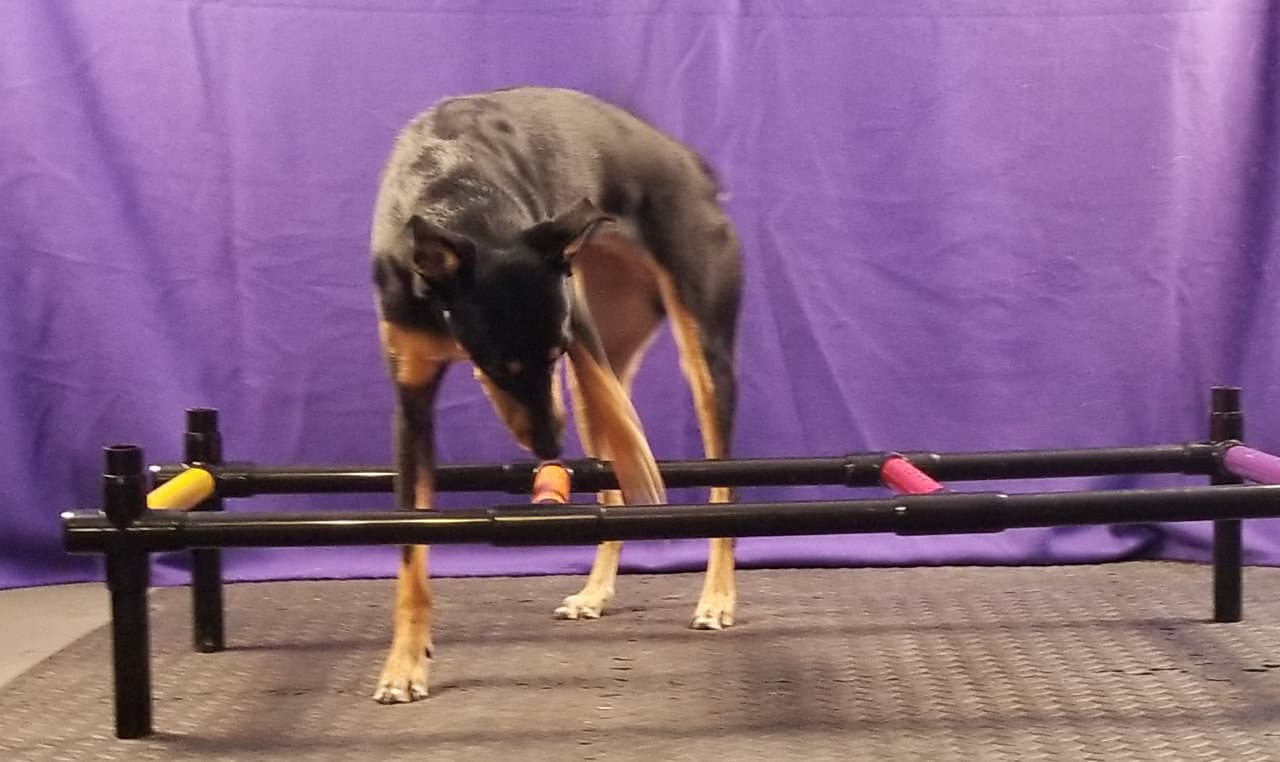
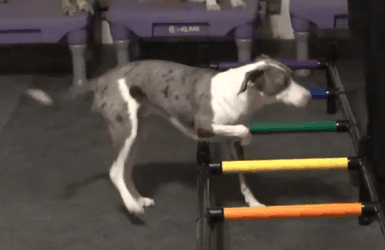
Exercise 6 – Teach Your Dog to Sidestep Through a Ladder with His Front Paws
Another excellent exercise to help teach rear end awareness is sidestepping through a ladder. There are two variations of this trick, we will talk about the one that is focused on front paws inside the ladder first. Teaching the dog to sidestep with his front paws in the ladder and his rear paws outside the ladder takes coordination and awareness of where the rear paws are in relation to the front. As the dog sidesteps with his front paws, he should also sidestep with the rear, keeping them on the outside of the ladder. This exercise works muscles in the front and rear end.
Exercise 7 – Teach Your Dog to Sidestep Through a Ladder with His Rear Paws
This variation of sidestepping through a ladder is the next level of difficulty from Exercise 5. The dog has to deliberately step sideways with his rear paws and lift them over each rung of the ladder, while maintaining his lateral stepping with the front paws. It is no longer a case of moving the front paws and having the back paws follow along with the same motion. This results in an even better workout for the rear limbs as they are brought up for each step to lift over the rungs of the ladder.
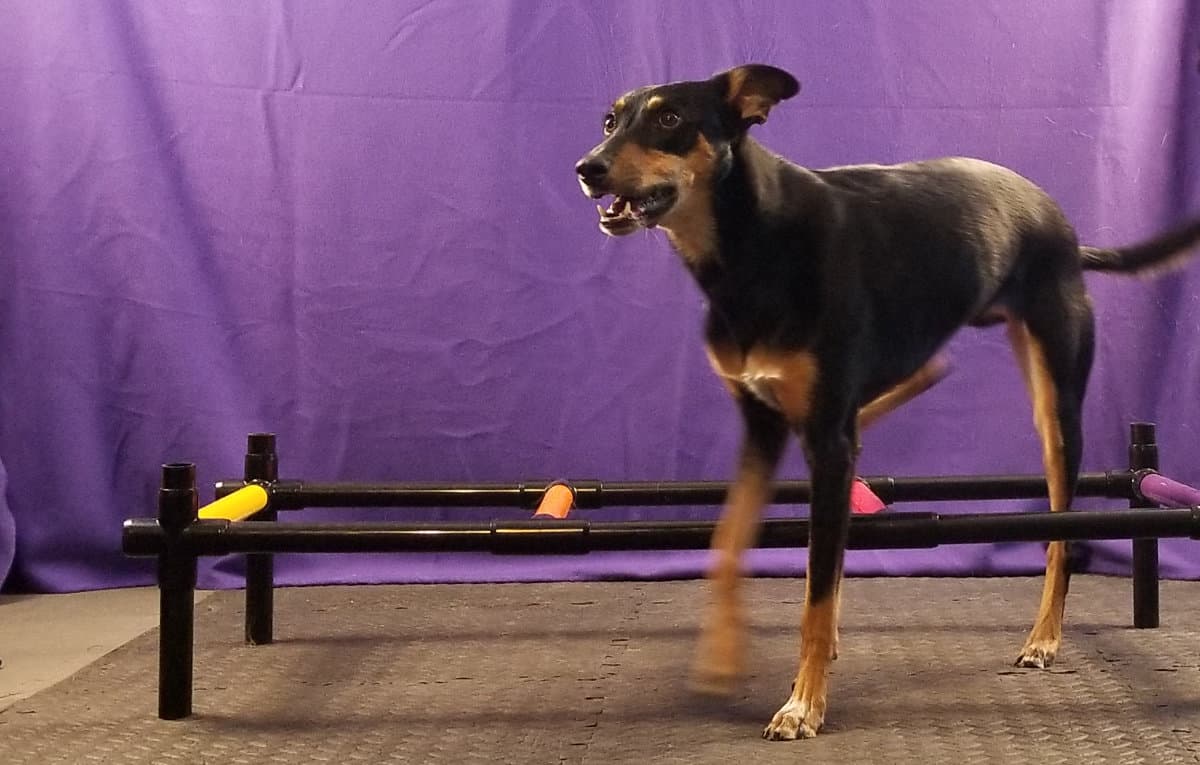
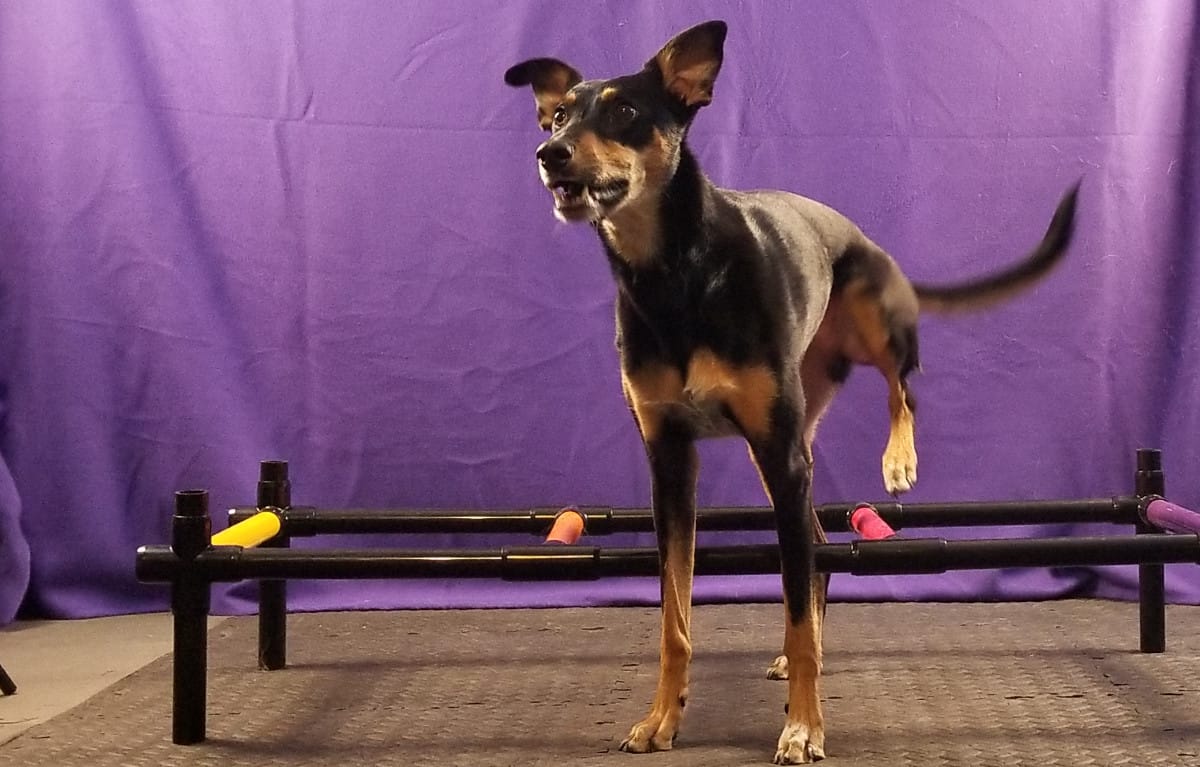
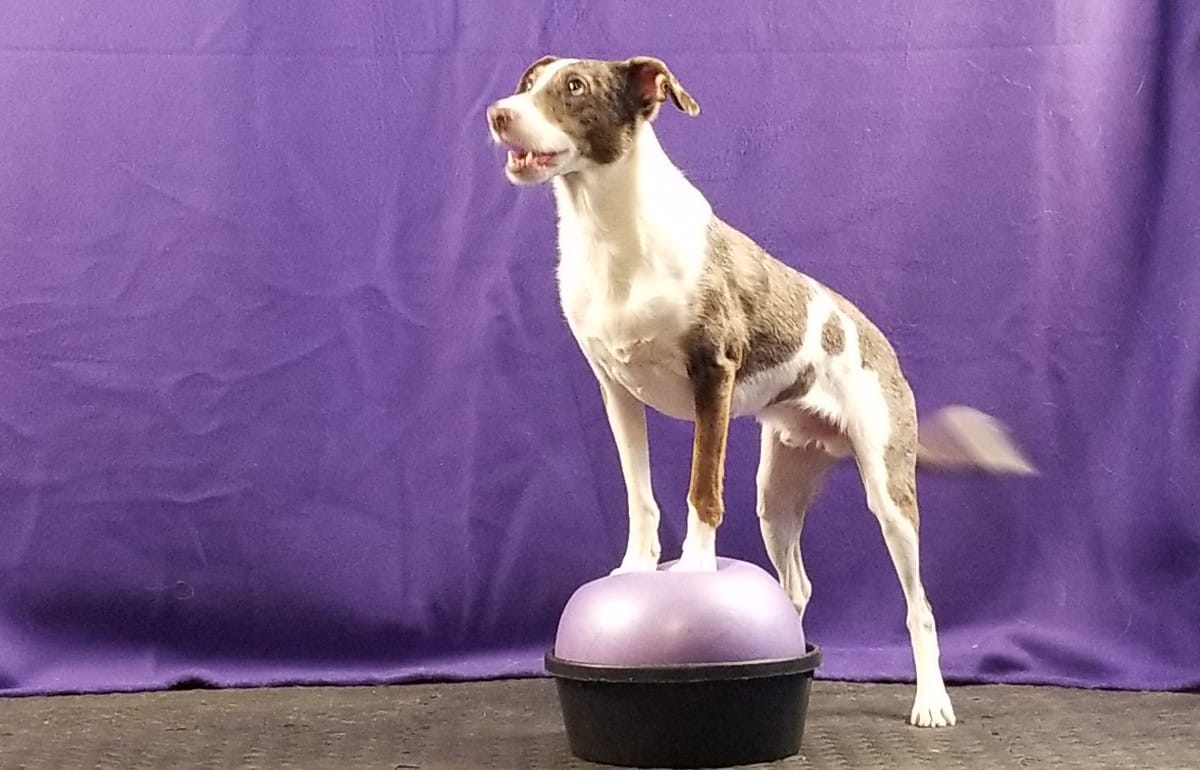
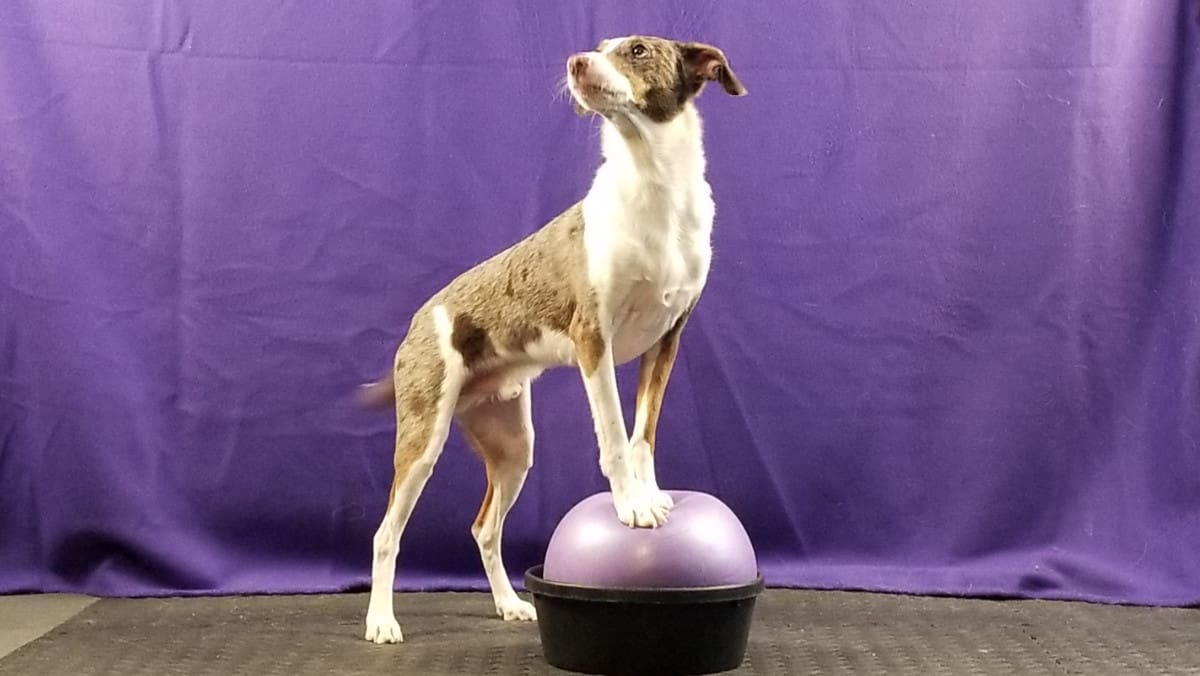
Exercise 8 – Teach Your Dog to “Perch” on a Stabilized Ball
Exercise 4 talks about having the dog perch and move laterally around a stationary object. To add more difficulty to this exercise, you can teach the dog to step laterally around a stabilized but moveable object like an exercise ball. The mark bucket makes a handy holder for many exercise balls, or you can stabilize it in a different way, like in a box or PVC frame. The exercise is performed exactly the same as the initial perch or sidestep drill, but the dog has the added challenge of having their front feet on an object that has some “give” to it, which increases the use of their front limbs and core muscles.
Exercise 9 – Teach Your Dog to Walk Backward Through a Ladder
The next challenge with a ladder is to have the dog walk backward through it, lifting his paws over each rung. This exercise combines Exercise 2 with an obstacle that he has to think about when moving backwards. The dog should lift each foot over the rungs separately, rear feet first, and then front feet. This is a great exercise for rear end strength and proprioception.
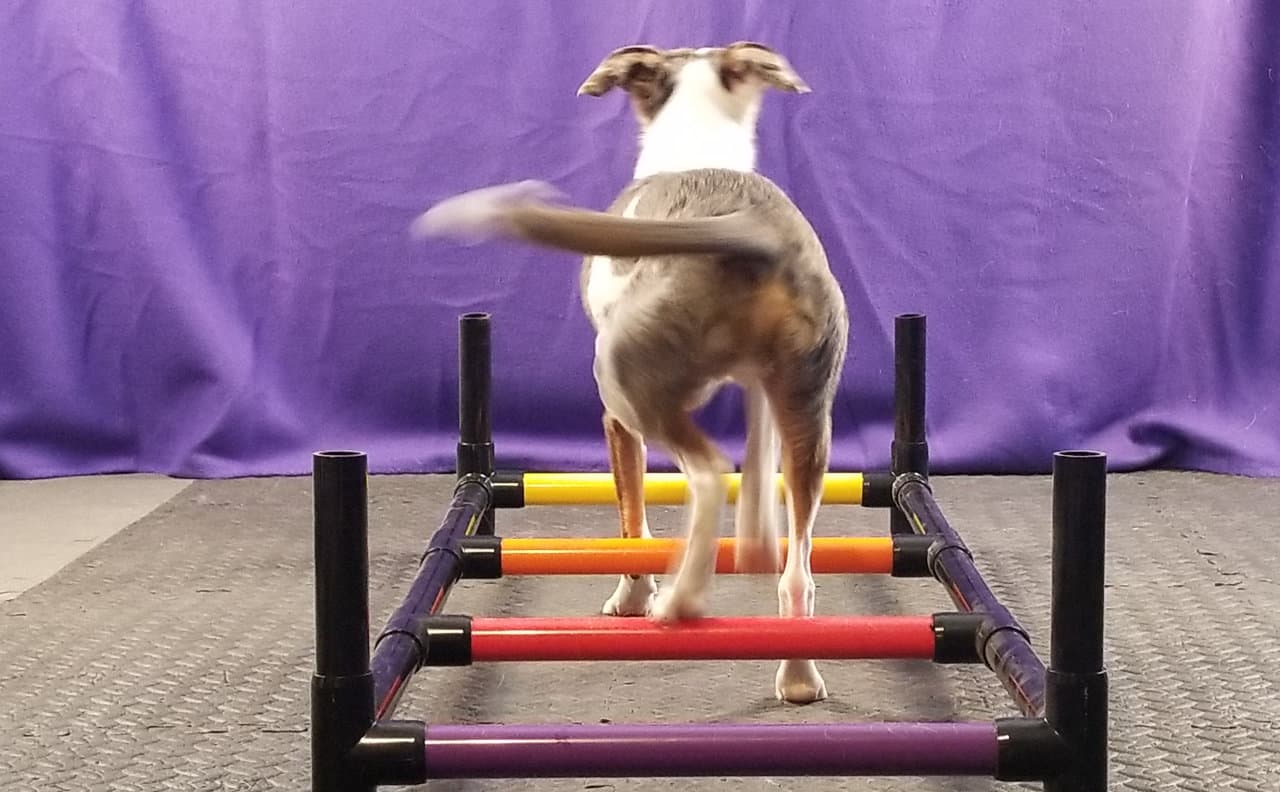
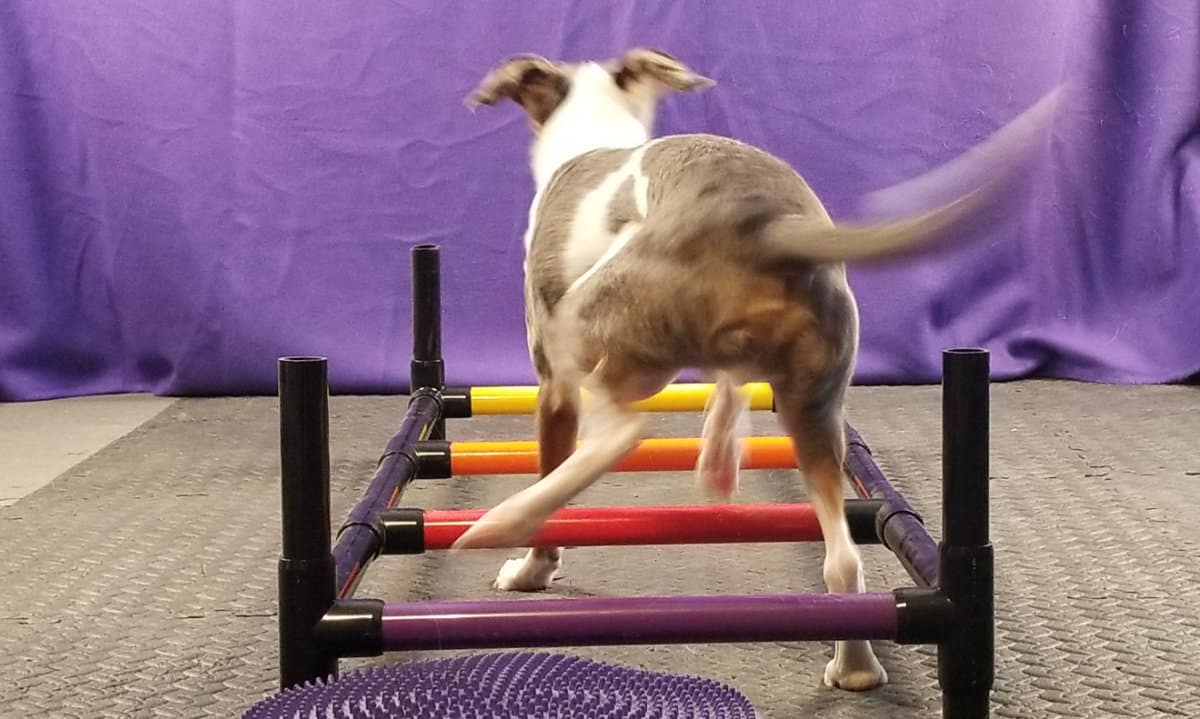
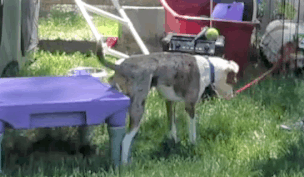
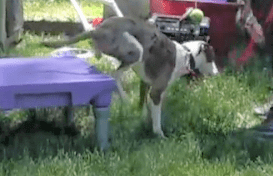
Exercise 10 – Teach Your Dog to Back Up a Set of Stairs
Now that the dog has backing up down pat, you can increase the difficulty again by having them back up a set of stairs. Do only a few repetitions of this exercise at a time until the dog builds up the core strength to help lift himself up each step. The sequence should be one rear foot up, then the other, and then the front paws up, either together or separately. This exercise requires core strength both to lift the rear end up and to pull the body up so the front paws come up to the next step. This exercise is not appropriate for long-backed dogs.
Exercise 11 – Teach Your Dog to Stand on Paw Pods (or Bricks)
Paw pods are a fantastic tool for proprioception and building core strength. This exercise combines the front paw targeting that was taught as part of perch with the rear paw targeting on the disc. As the dog becomes proficient at putting both sets of feet up on the larger objects (mark bucket and fit disc, or substitutes), you can transition to having the dog place each foot individually on paw pods. The challenge of balancing on a small rounded object works the core muscles and limbs.
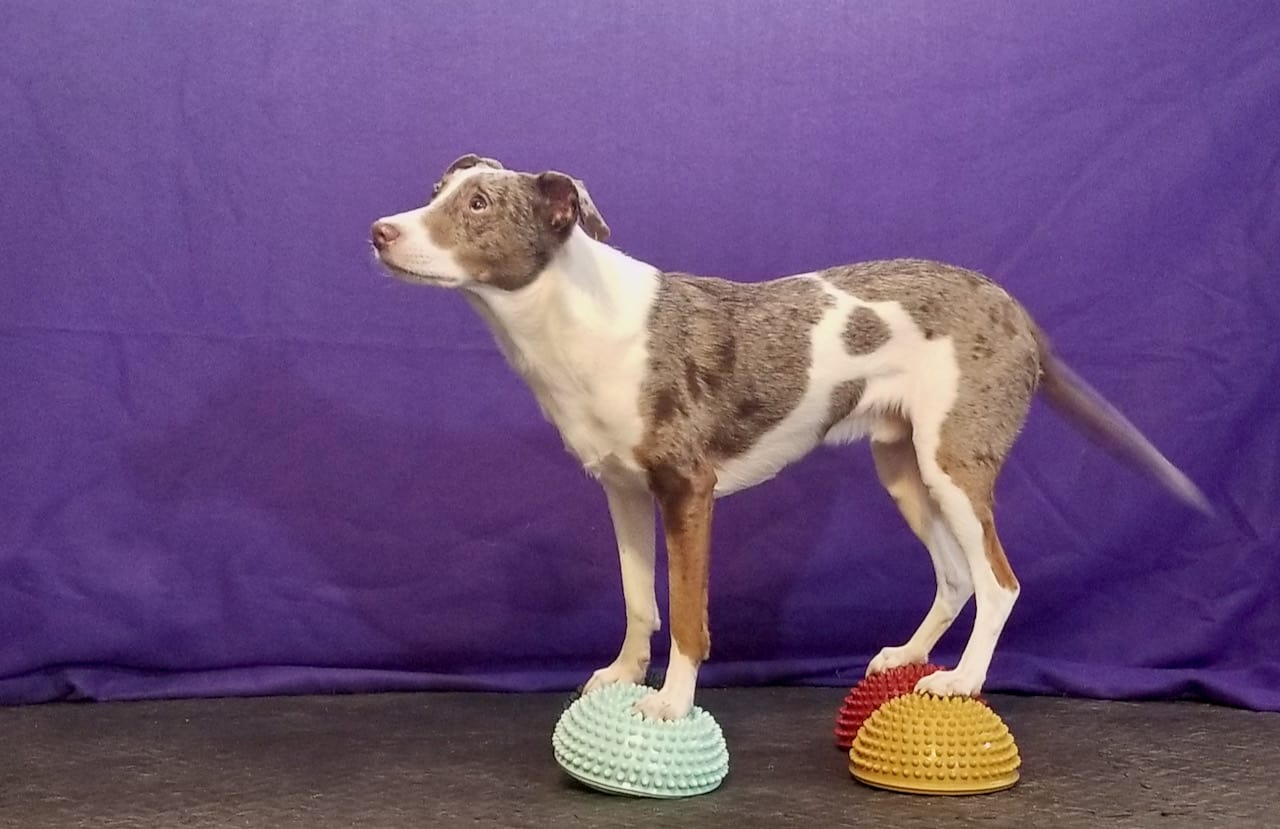
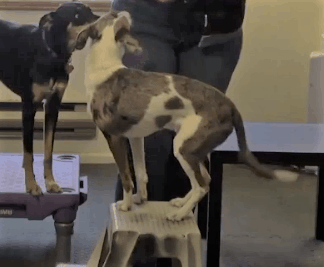
Exercise 12 – Teach Your Dog to Balance on a Block or Stool
Exercise 5 requires the dog to put his paws into a small space. This exercise takes the next step by asking the dog to put his paws on top of a small object and balance in a collected stance. The most common objects are a small step stool or cinder block, but anything sturdy and stable can be used for this exercise. Balancing in a small space strengthens the core muscles and front and hind limbs.
Once your dog has learned all of these exercises, not only will he have a solid understanding of where his rear paws are and have improved his proprioception, he also will have strengthened his muscles and exercised his brain.
Want this information in an eBook format? Grab the free eBook here!
Want some help learning how to teach your dog these exercises? One of my most popular courses, Rear End Awareness for Agility Dogs, goes through the steps in detail, so you can easily improve your dog’s fitness. Click the link below to learn more.
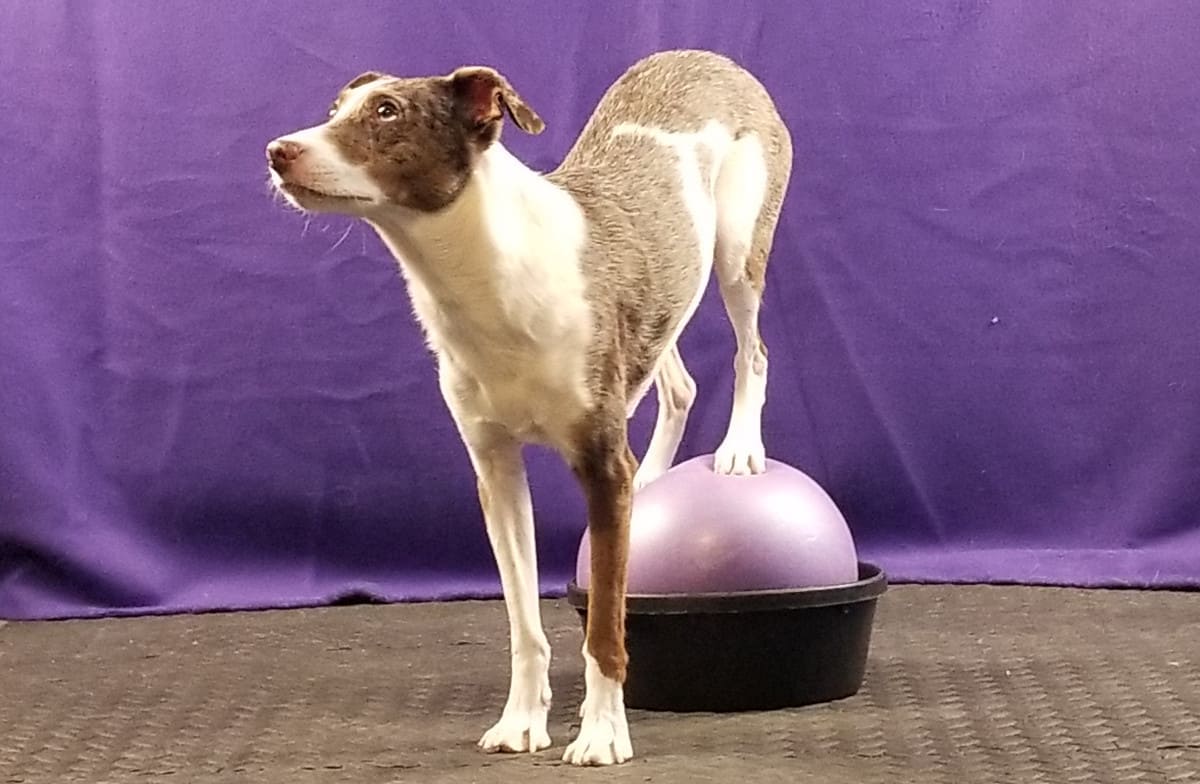
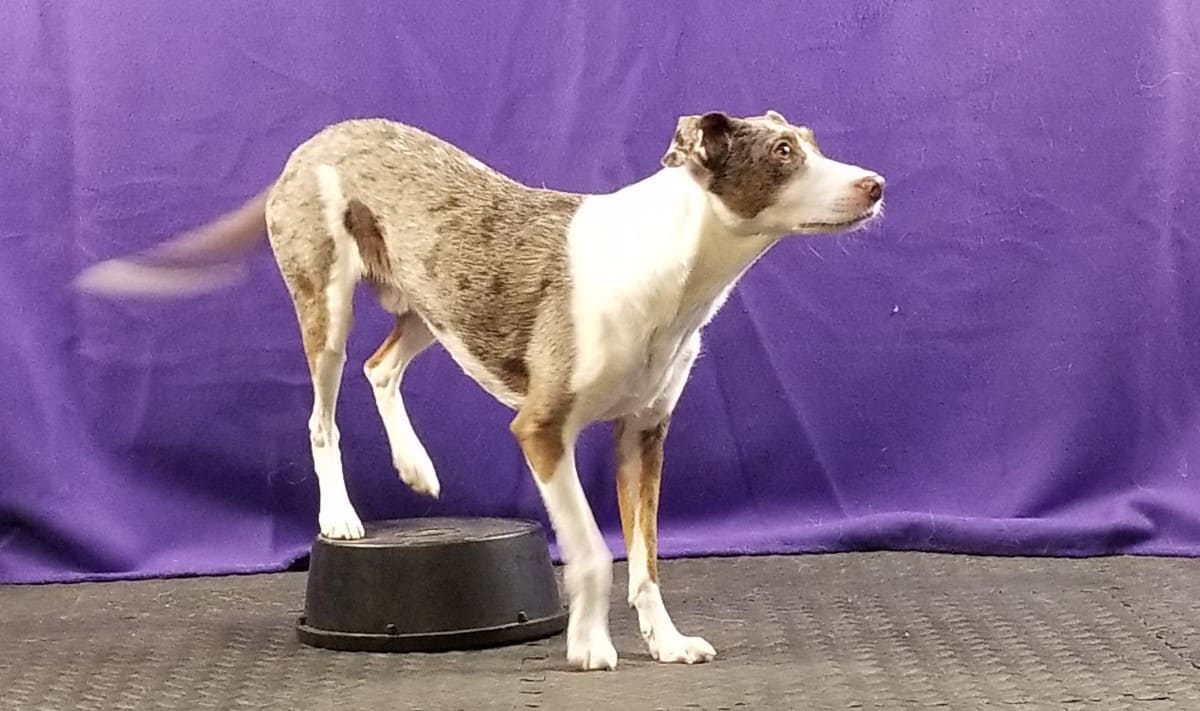
You know WHAT to teach, now come find out HOW! The online course, Rear End Awareness for Agility Dogs, will improve your dog’s contacts, jumps, and weave poles.
Three recorded calls from the original live course will answer most of the questions you might have. Access to the instructor allows you to ask your own questions. Twelve short but information-rich videos show you how to teach each of the exercises, so you can put your dog on the path to becoming a rear-end-aware superstar!
Click the button to learn more!

You Might Also Like…
Five Ways to Crush It at Your Next Dog Agility Seminar
Going to a dog agility training seminar? Check out these five tips to maximize your return on investment!
Read This Before Deciding on Your Agility Dog’s Contact Performance
Which contact performance, running or stopped, is right for your team? The answer might surprise you.
Is Your Agility Dog a Pinto or a Ferrari?
If you’ve moved up from a slow or moderately-fast agility dog to a speed racer, here’s some advice to make your life easier.
Get tips, stories, discounts, and early notification of events and new courses delivered straight to your inbox! Join the community!
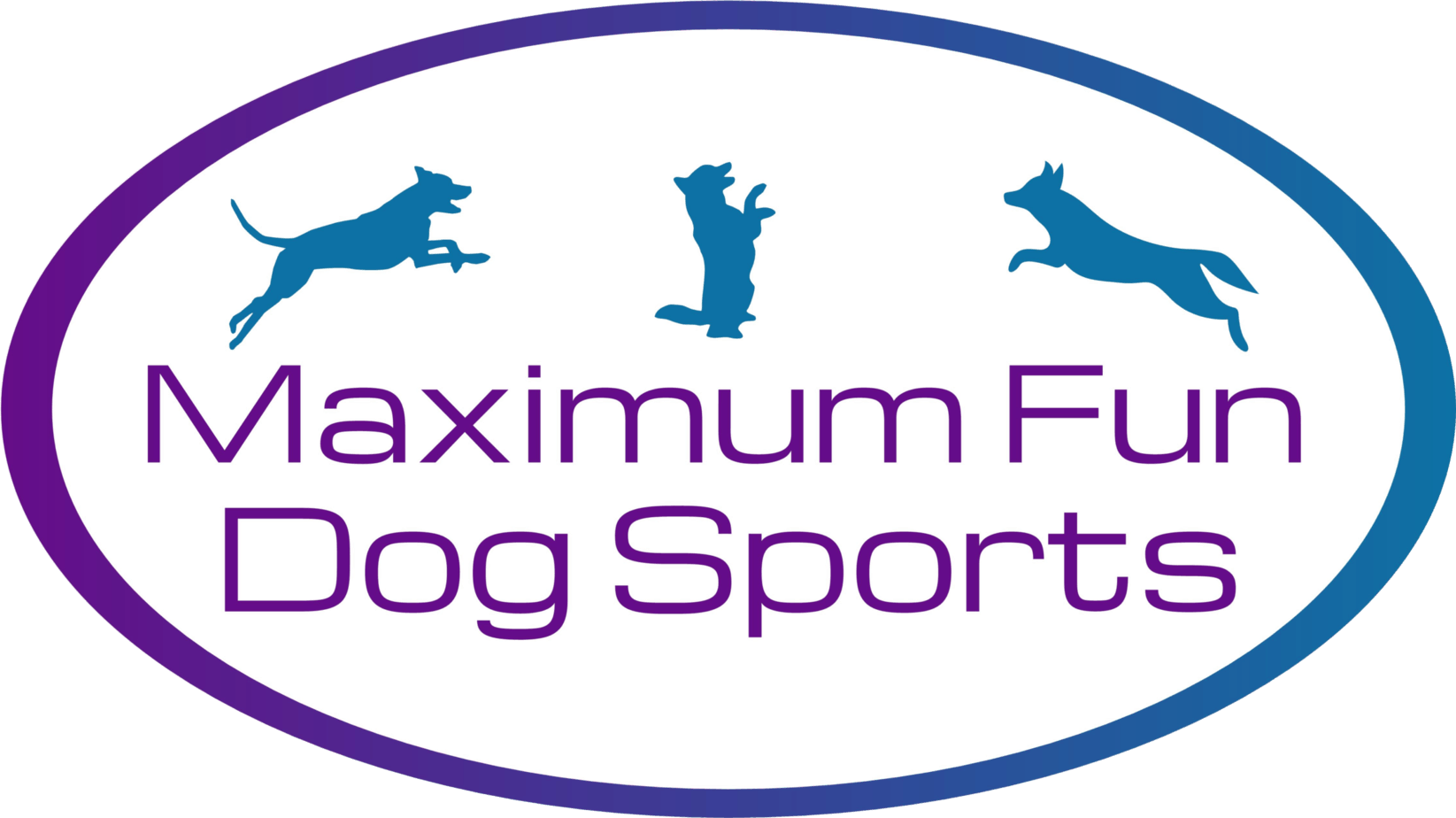
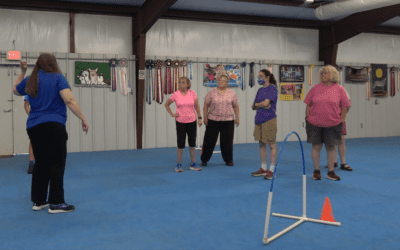
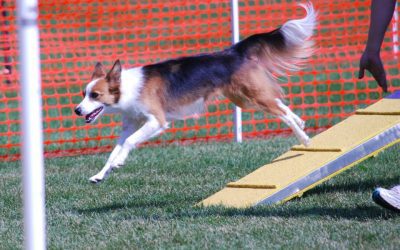
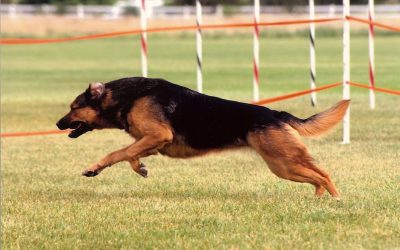
0 Comments